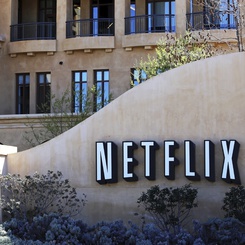While arguably the most prestigious awards show on the planet, the Academy Awards aren’t always a popular event for the self-described “film buff.” Cinephiles will tend to argue that the Oscars go to typical Hollywood fare and steer clear of truly innovative, avant-garde or foreign films that might be considered more financially and artistically risky.
Indeed, the Oscars have a real financial impact on nominated films. If the Hollywood “engine” is churning out the product, doesn’t it make sense that their big budget blockbusters get recognized and reap the benefits? An ebb and flow of fluctuating trends have governed the nominations but more recent signs might point to a more open, international and experimental Academy.
ESSEC’s Stoyan Sgourev thinks so. A Professor of Management and an expert on the cultural industries he argues that it’s important to understand that cultural products share a common trait: their producers are pushed and pulled between two kinds of consumers: the experts, who expect more in terms of innovation and risk-taking, and the general public who tend to have more predictable tastes.
“In many cultural industries we have this tension between the demands of the market and artistic excellence and it’s not easy to find a balance between the two,” he explains. “If you look at Opera, for example, it’s exactly the same kind of situation. The blockbusters are Verdi, Puccini, Rossini or Mozart. These productions always sell out so they are popular choices for producers. But at the same time, producers understand that the more sophisticated part of the audience needs something more challenging. I think the academy awards are making moves to embrace both ends of this spectrum.”
In 2010 the Academy of Motion Picture Arts and Sciences made the decision to expand the list of nominated films for Best Picture from five to ten. It’s been argued that this decision was made to leave more room for blockbuster films which in turn might attract larger audiences to the ceremony. However, Professor Sgourev argues that there are two sides to this coin: the positive outcome is that smaller films also are getting a share of the spotlight.
“In 2011, Michel Hazanavicius’ "The Artist" took away the top prize in a very surprising turn of events. Although the film pays homage to old Hollywood, it’s nonetheless a very original, niche-type movie and therefore, inherently risky. Its nomination played a big part in its emergence as a hit and it very quickly went from limited to wide release.”
“Expanding the list of nominated films to ten was a good move because it made it possible for the “small” movies to become more visible. Michael Haneke’s "Amour" most likely won’t win Best Picture. But the fact that it’s nominated has driven more people to see it and has given it a big boost in the box office. We’re talking about an Austrian movie filmed entirely in French. This is not something that American audiences would typically be drawn to.”
To bolster this argument, it’s important to note that not a single blockbuster managed to make the cut this year – the only possible contender for a Best Picture nod arguably being Sam Mendes’ "Skyfall", which did, however, get nods in other categories.
These past few years, the Oscars have certainly adopted a more international feel. In 2008, French Actress Marion Cotillard took the top acting award for her performance in "La Vie en Rose", her performance entirely in French. Rewarding a performance entirely given in a foreign language was something the academy had only done four times previous in their long history. And since then, Spaniard Penelope Cruz (2008) and German Christophe Waltz (2009) have accomplished the same feat. In 2009, Danny Boyle’s "Slumdog Millionaire" – a British film about a group of Indian slum children – was an unexpected success. In 2011 the night was all about another British film, Tom Hooper’s "The King’s Speech". “
This international trend is giving off a very good signal,” says Professor Sgourev. “The academy seems to be opening up, becoming more global. They are not the all-American awards ceremony they used to be.”
“They’re also showing us that they’re more open to originality and innovation and that it’s not all about execution. Ang Lee’s "The Life of Pi", is a good example of a film that marries both – it’s wonderfully executed but it’s also visually and conceptually innovative. That said, other films are getting recognized for their execution in the strictest sense of the term.”
This year – it is an election year after all – the trend has been political. Katherine Bigelow’s "Zero Dark" Thirty confronts the CIA’s hunt for Osama Bin Laden, Ben Affleck’s "Argo" looks at the Iranian Hostage Crisis of 1979 and Steven Spielberg’s "Lincoln" recounts events leading up to the abolishment of slavery. While not particularly innovative, all are expertly executed.. “
”Lincoln” is a very traditional biopic. It’s not taking a lot of risks, following a proven formulae. This, however, might prove to its advantage, as after the success of the highly unorthodox “The Artist” last year, Academy members might feel the need to pull back a little and reward a more traditional movie, especially given the weight of the directors’ name and the treated subject in a highly political year”.
The political trend in the nominations this year is not surprising – it was likely a conscious decision by studios to confront a topic that is in the public eye right now. Their motivations will continue to be governed by what they feel the public wants to see. Indeed, specialty divisions, like Miramax for example, dedicated to more independent, quirky films, have been finding it hard to survive in today’s climate. There is always elevated risk of failure when you try to do something new.
“The critical problem in the film industry is distribution. Only the cream-of-the-crop get properly distributed. Generally it’s easier to make it work if you play by the rules,” he adds. “And if you don’t play by the rules, you need to give distributors a solid reason to show your film."
“With my Marketing colleague Niek Althuizen we conducted an experiment showing students a series of paintings, but changing the names of the artists. They evaluated the paintings very differently based on the name that we gave them. When the artist was well-know, they were much more tolerant of experimentation. When they were told it was an anonymous artist, they were much less accepting of experimentation. People judge experimentation through the lens of status. This is why many familiar names of actors and directors tend to keep popping up come awards time.”
“Name recognition is something that studios can bank on. In fact, the films that have brought in the biggest revenue in recent years have been sequels – tried and true formulas that studios hope will once again prove successful. But name recognition is also giving top directors more creative freedom. This year, good examples are Ang Lee and Paul Thomas Anderson.”
There are balancing forces in any cultural industry. Hollywood and their Academy of Motion Picture Arts and Sciences have tended to favor the safer, “general public” end of the spectrum. And while major studios will continue to be the driving force behind the film industry and blockbuster their bread and butter, the Academy Awards have started to share its spotlight with the more risky, innovative films.
“If "Amour" doesn’t get the trophy this year,” says Professor Sgourev, “one day soon, a foreign language movie will. This is what the Academy’s trends point to.”









